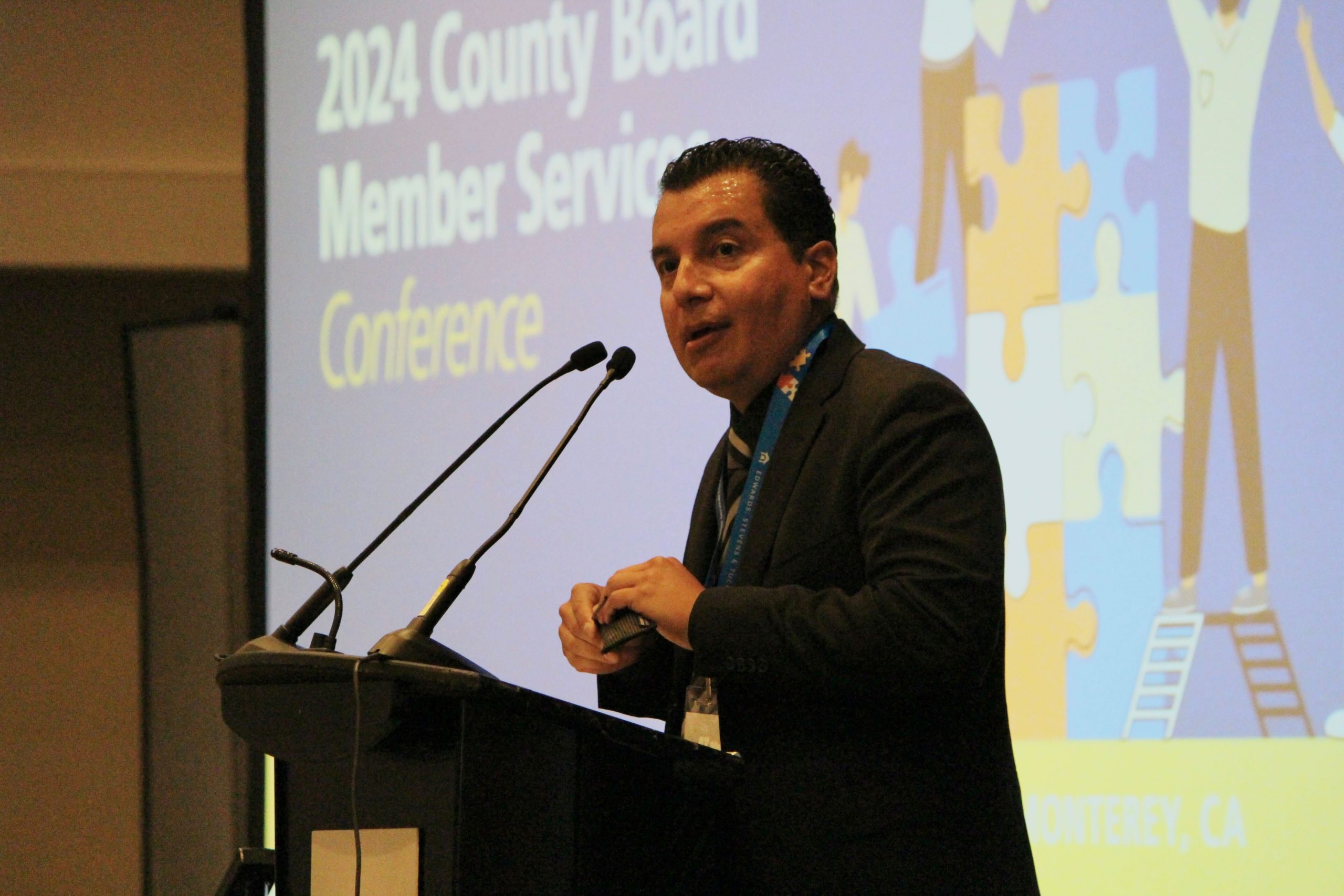To mask or not to mask has been a controversial topic for months as the pandemic picks up once again.
By now, residents of the Golden State know that the California Department of Public Health is requiring masks to be worn while indoors at K-12 schools regardless of vaccination status. But must they be worn during school board meetings?
This was one point of discussion on Aug. 26 during California School Public Relations Association (CalSPRA) webinar “Meeting Management in Times of Turbulence.”
Jessica Hull, CalSPRA president-elect, was joined by attorney Peter Fagen of Fagen Friedman & Fulfrost, or F3 Law, which is also a CSBA affiliate law firm. As mentioned during the event, information shared was for informational purposes and did not constitute legal advice.
According to Fagen, boards have three options to weigh. The most restrictive involves having everyone present at meetings wear a mask. Boards can also implement vaccine verification methods allowing vaccinated individuals to go maskless or inform attendees of vaccination requirements and allow for self-attestation. These options come from the July 28 CDPH Face Coverings Q&A, which also covers when masking exceptions can be made.
Of course, in addition to considering state guidance, boards must also be sure to adhere to local health orders, which may be stricter, said Fagen. To avoid confusion, he suggested listing expectations at the top of meeting agendas and citing the guidance being followed. For the best optics, he added that education leaders may want to consider being consistent with what is required in the local educational agencies’ own schools.
Managing unruly attendees
Planning for how boards will manage meetings is another key consideration. As demonstrations at school board meetings are on the uptick, knowing what to do if a situation gets out of hand or disruptive allows meetings to run smoother. Fagen noted that organized groups like Let them Breathe have a schedule of events on their websites where boards can see if a large group is scheduled to attend its meeting.
“Under the California open meetings law, the Brown Act, there is an opportunity to remove people if they are so disruptive that the public agency, the board, cannot conduct its business,” Fagen said. “Looking at the language in the law, it clearly contemplates that you will try to remove someone before you adjourn to another setting or clear the room.”
Before removing individuals, Fagen said it is custom to give them at least one chance to calm down if not more. A designated staff member or law enforcement may be assigned this task, though again, LEAs should consider the optics.
If a room is cleared, credentialed members of the media should still have access to covering the remainder of the proceedings.
Being mindful of language, like calling for a recess to calm room down or clear room vs. adjourning (ending a meeting), is important too, Fagen said. Use of a gavel to calm a room or gain attention has also proven successful.
Fagen said that sample language that can be used during meetings is available for CalSPRA membership.
Hull made recommendations related to communications with stakeholders and with the media. She recommended adding clear language to the agenda when face masks are required and reference the guidance you are following. Board members listening to and honoring the democratic process by respecting all opinions should be the standard. In preparing for the media, she recommended having talking points prepared when possible and having a quiet space set aside for interviews. Talking points and guidance should also be relayed regularly to leaders at school sites to ensure uniform communication with the public.





